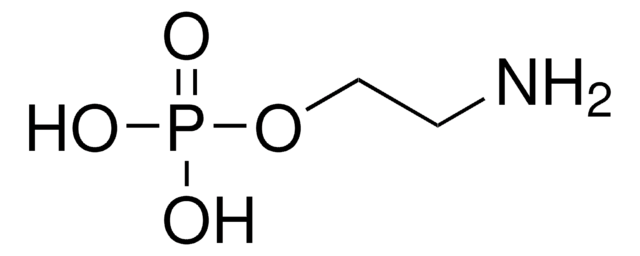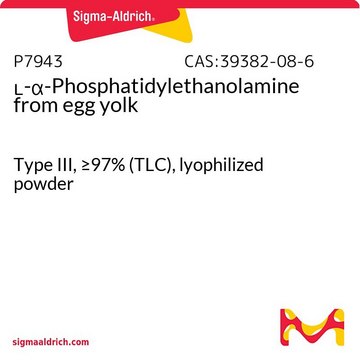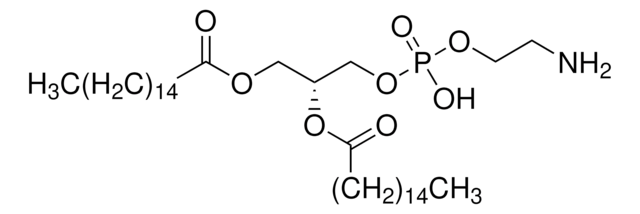P3275
1,2-Dipalmitoyl-rac-glycero-3-phosphoethanolamine
synthetic, ≥98%
Synonym(s):
1,2-Dihexadecanoyl-rac-glycero-3-phosphoethanolamine, rac-Phosphatidylethanolamine, 1,2-dipalmitoyl, DL-β,γ-Dipalmitoyl-α-cephalin
About This Item
Recommended Products
biological source
synthetic
Quality Level
Assay
≥98%
form
powder
functional group
phospholipid
lipid type
phosphoglycerides
shipped in
ambient
storage temp.
−20°C
SMILES string
CCCCCCCCCCCCCCCC(=O)OCC(COP(O)(=O)OCCN)OC(=O)CCCCCCCCCCCCCCC
InChI
1S/C37H74NO8P/c1-3-5-7-9-11-13-15-17-19-21-23-25-27-29-36(39)43-33-35(34-45-47(41,42)44-32-31-38)46-37(40)30-28-26-24-22-20-18-16-14-12-10-8-6-4-2/h35H,3-34,38H2,1-2H3,(H,41,42)
InChI key
SLKDGVPOSSLUAI-UHFFFAOYSA-N
Looking for similar products? Visit Product Comparison Guide
Related Categories
Storage Class Code
11 - Combustible Solids
WGK
WGK 3
Flash Point(F)
Not applicable
Flash Point(C)
Not applicable
Personal Protective Equipment
Choose from one of the most recent versions:
Already Own This Product?
Find documentation for the products that you have recently purchased in the Document Library.
Our team of scientists has experience in all areas of research including Life Science, Material Science, Chemical Synthesis, Chromatography, Analytical and many others.
Contact Technical Service







